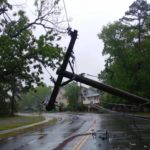 Electrical burns of any type can be severe – even if it doesn’t appear so visually. Your skin may have minimal damage while you’re experiencing internal organ and tissue damage. It’s important to get checked out by your healthcare provider as quickly as possible so they can evaluate your burn and treat it properly. Teach your children electrical safety and always follow posted safety rules.
Electrical burns of any type can be severe – even if it doesn’t appear so visually. Your skin may have minimal damage while you’re experiencing internal organ and tissue damage. It’s important to get checked out by your healthcare provider as quickly as possible so they can evaluate your burn and treat it properly. Teach your children electrical safety and always follow posted safety rules.
Avoiding electrical burns
One of the best ways to avoid electrical burns is to follow safety guidelines on equipment and products at home and in the workplace.
Whether at home or on the job, dispose of damaged electrical cords and never use electrical tape to “repair” a frayed or damaged cord.
Wear and use  the proper safety equipment for the task at hand. This can include:
the proper safety equipment for the task at hand. This can include:
- Cotton protective clothing with long sleeves
- Helmet or hard hat
- Goggles for eye protection
- Gloves (leather or rubber)
- Hearing protectors
- Safety footwear
Always follow manufacturers’ instructions when using electrical equipment, appliances, and other products.
Use ground-fault circuit interrupters (GFCIs) in wet locations, construction sites & and other high-risk areas.
 Keep away from downed power lines. Call 911 if you see a downed power line! Always assume they are live and dangerous because if they are live they are very dangerous. Don’t touch them with your hands or objects (like a stick, broom, or pole), and keep children and pets away from them. Don’t drive over fallen power lines.
Keep away from downed power lines. Call 911 if you see a downed power line! Always assume they are live and dangerous because if they are live they are very dangerous. Don’t touch them with your hands or objects (like a stick, broom, or pole), and keep children and pets away from them. Don’t drive over fallen power lines.
Always call your local utility company before digging. Coming into contact with live underground cables can be very painful, as well as potentially causing burns to the hands, face, and body.
First aid for electrical burns
Get electrical burn first aid information from the Mayo Clinic.
Learn about A.R.M.’s services here and the jobs we generally fill here.
